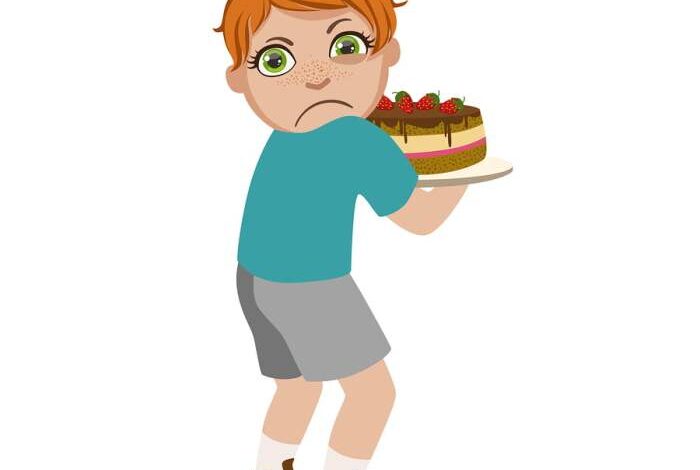
Its Not Mine: Exploring the Psychology of Denial and Ownership
Its not mine – It’s Not Mine – a simple phrase, yet it holds a surprising amount of psychological weight. From casual conversations to serious legal disputes, this seemingly innocent declaration can reveal a complex web of denial, responsibility, and the ways we navigate our relationships with the world around us.
This blog delves into the multifaceted implications of “It’s Not Mine,” examining its role in psychological defense mechanisms, ethical dilemmas, and even the complexities of communication and conflict resolution. We’ll explore how this phrase can be used to deflect blame, avoid accountability, and even create misunderstandings across cultural boundaries.
Denial and Disassociation: Its Not Mine

The phrase “It’s not mine” is a simple statement, yet it can carry a heavy psychological weight. It’s often used as a defense mechanism, a way to distance oneself from responsibility, guilt, or even painful emotions. Understanding the implications of this phrase can shed light on the complex interplay between our actions, our emotions, and our perception of reality.
Situations Where “It’s Not Mine” is Used
The phrase “It’s not mine” can be used in various situations, each reflecting a different underlying emotional state. Here are some examples:
- Avoiding Responsibility:When someone is confronted with a mistake or a negative consequence, they might disavow responsibility by claiming it “wasn’t their fault” or “wasn’t their doing.” This is a classic example of denial, where the individual tries to protect themselves from the emotional discomfort of admitting fault.
- Shifting Blame:In a conflict, someone might use the phrase “It’s not mine” to shift the blame onto another person or external factors. This can be seen as a form of projection, where the individual attempts to deflect their own feelings of guilt or inadequacy.
- Emotional Distance:In cases of emotional trauma or abuse, victims might use “It’s not mine” to distance themselves from the painful memories and experiences. This can be a coping mechanism to protect themselves from overwhelming emotional distress.
Emotional States Associated with Denial
Denial, as a psychological defense mechanism, is often associated with a range of negative emotions, including:
- Guilt:When someone denies responsibility, they might be trying to avoid feeling guilty for their actions or inaction.
- Shame:The act of denial can stem from a desire to avoid feeling shame or embarrassment for a mistake or a perceived failure.
- Fear:Denial can also be driven by fear of the consequences of accepting responsibility. This fear can be rooted in anxieties about punishment, judgment, or social stigma.
- Anger:The frustration and anger associated with feeling unjustly blamed can lead to denial as a way to protect oneself from further emotional distress.
Real-Life Scenarios
The phrase “It’s not mine” is commonly used in various real-life scenarios, often with defensive implications. Here are some examples:
- A child might deny breaking a vase, claiming it was already broken before they arrived. This is a classic example of denial used to avoid punishment or responsibility.
- In a workplace setting, an employee might deny a mistake, blaming it on faulty equipment or inadequate training. This can be seen as a way to protect their reputation and avoid negative consequences.
- In a relationship, one partner might deny infidelity, claiming the other partner is misinterpreting the situation. This can be a way to avoid confronting painful truths and protect the relationship, at least temporarily.
Communication and Conflict Resolution

The phrase “It’s not mine” can be a seemingly simple statement, but it can hold significant weight in communication, particularly in conflict situations. It can be a way to deflect responsibility, express denial, or even escalate tension. However, it can also be used constructively to acknowledge boundaries and facilitate understanding.
Using “It’s Not Mine” in Communication
The phrase “It’s not mine” can be used in various communication scenarios, often reflecting a particular mindset or intention.
- Denial of Responsibility:This is the most common usage. It can be a way to avoid accountability for actions, mistakes, or even possessions. For example, a child might say “It’s not mine” when confronted with a broken toy, even if they were the ones who broke it.
- Establishing Boundaries:In some cases, “It’s not mine” can be a clear statement of boundaries. For example, a person might say this when asked to take on a task that is not within their job description or responsibilities.
- Expressing Disagreement:The phrase can also be used to express disagreement or dissent. For example, someone might say “It’s not mine” when presented with an idea or proposal that they don’t agree with.
Escalating Conflict with “It’s Not Mine”, Its not mine
The phrase “It’s not mine” can escalate conflict in several ways.
- Lack of Ownership:By refusing to take ownership, the phrase can create a sense of distance and disengagement, hindering the possibility of finding a solution.
- Blame Shifting:The phrase often implies that someone else is responsible, shifting the blame and potentially creating resentment.
- Defensive Stance:The phrase can be perceived as defensive, creating a barrier to open communication and making it harder to find common ground.
Constructive Use of “It’s Not Mine”
While the phrase can be used negatively, it can also be used constructively to promote clear communication and understanding.
- Setting Boundaries:When used in a clear and assertive manner, the phrase can effectively establish boundaries and prevent misunderstandings. For example, “It’s not mine to decide” can clearly indicate that the speaker is not the appropriate person to make a particular decision.
- Clarifying Roles and Responsibilities:The phrase can help clarify roles and responsibilities, preventing confusion and miscommunication. For example, “It’s not my job to handle that” can help ensure that tasks are assigned to the appropriate individuals.
- Expressing Disagreement Respectfully:When used in conjunction with other communication strategies, the phrase can be a way to express disagreement respectfully without being confrontational. For example, “I understand your perspective, but it’s not mine” can acknowledge the other person’s viewpoint while also expressing a different opinion.
Communication Strategy for Resolving Conflict
When the phrase “It’s not mine” is used in a conflict situation, a strategic approach is crucial for resolving the issue.
- Acknowledge and Validate:Start by acknowledging the other person’s perspective and validating their feelings. This helps to create a sense of understanding and empathy.
- Clarify the Context:Ask questions to clarify the context of the phrase. What does the other person mean by “It’s not mine”? What are they trying to communicate?
- Explore Alternatives:Instead of focusing on who is responsible, explore alternative solutions or ways to move forward. This shifts the focus from blame to problem-solving.
- Focus on Shared Goals:Remind the other person of the shared goals and objectives. This helps to refocus the conversation on collaboration and cooperation.
- Seek Compromise:If possible, seek a compromise that addresses the concerns of both parties. This shows a willingness to work together and find a mutually acceptable solution.
I found these awesome shoes at a thrift store the other day, and they were covered in this weird, cracked paint. I knew right away that they weren’t mine, but I couldn’t resist the urge to give them a makeover.
I decided to try using mod podge shoes to give them a fresh, new look, and I’m so glad I did! The shoes turned out amazing, and now I can’t wait to show them off. It’s funny how something that wasn’t mine can become something so special.
Sometimes, when I hear “It’s not mine,” I feel a pang of sadness. It reminds me of the things I’ve lost, the things I’ve given away, the things I’ve simply let go. But then I remember, it’s not about ownership, it’s about gratitude.
What are you thankful for? what are you thankful for That’s the real question. And the answer, I believe, is the things that truly matter: the love, the laughter, the moments we share. So, maybe “It’s not mine” isn’t such a bad thing after all.
It just means there’s something else out there waiting to be cherished.
Sometimes, the best gifts aren’t about price, but about thoughtfulness. Even if you’re on a tight budget, you can still find incredible presents that show you care. Check out this article for two thoughtful gifts under 1 that will impress anyone! You’ll be surprised how much impact a little creativity can have, even when it’s “not mine” to give.


